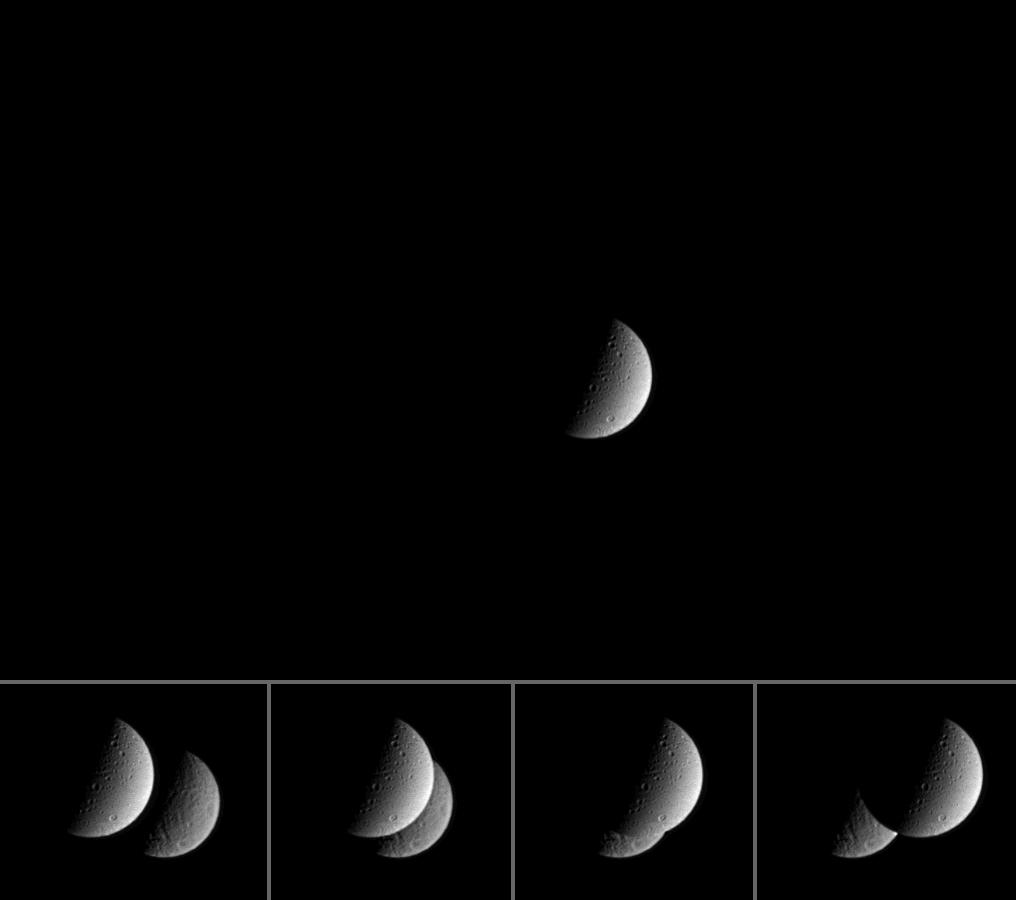Cassini’s Private Eclipse

| PIA Number | PIA06199 |
|---|---|
| Language |
|
Click here for the QuickTime video.
For this movie, Cassini pointed its cameras toward Saturn's moon Dione to witness its distant sibling moon Rhea briefly pass behind in a series of 32 individual frames taken over 17 minutes. Four individual frames from the eclipse are shown at bottom.
Rhea (1,528 kilometers, or 949 miles across) is larger than Dione (1,118 kilometers, or 695 miles across), but also is farther away as seen here, which explains why the two moons appear to be roughly the same angular size.
The view shows principally the anti-Saturn side of Dione, and the Saturn-facing side of far-off Rhea.
The images in this movie were taken in visible light with the Cassini spacecraft narrow-angle camera on Feb. 20, 2005, at a distance of approximately 1.5 million kilometers (900,000 miles) from Dione and about 2.3 million kilometers (1.4 million miles) from Rhea. The image scale is approximately 9 kilometers (6 miles) per pixel on Dione and 14 kilometers (9 miles) per pixel on Rhea.
The Cassini-Huygens mission is a cooperative project of NASA, the European Space Agency and the Italian Space Agency. The Jet Propulsion Laboratory, a division of the California Institute of Technology in Pasadena, manages the mission for NASA's Science Mission Directorate, Washington, D.C. The Cassini orbiter and its two onboard cameras were designed, developed and assembled at JPL. The imaging team is based at the Space Science Institute, Boulder, Colo.
For more information about the Cassini-Huygens mission visit http://saturn.jpl.nasa.gov . For additional images visit the Cassini imaging team homepage http://ciclops.org .
Credit: NASA/JPL/Space Science Institute
